Our walking tour in Bucharest was to the nearby Revolution Square. Formerly known as the Palace Square until 1989, it was later renamed after the 1989 Romanian Revolution.
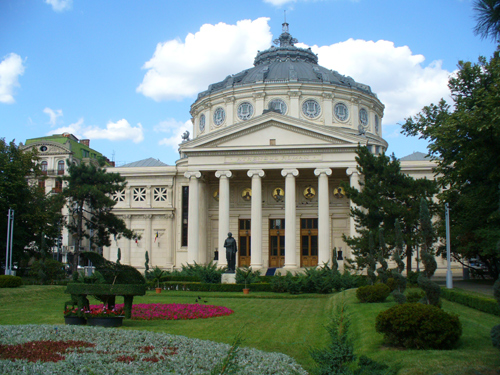 The Romanian Athenaeum is a concert hall in the center of Bucharest, Romania and a landmark of the Romanian capital city. Opened in 1888, the ornate, domed, circular building is the city's main concert hall and home of the "George Enescu" Philharmonic and of the George Enescu annual international music festival.
The Romanian Athenaeum is a concert hall in the center of Bucharest, Romania and a landmark of the Romanian capital city. Opened in 1888, the ornate, domed, circular building is the city's main concert hall and home of the "George Enescu" Philharmonic and of the George Enescu annual international music festival.
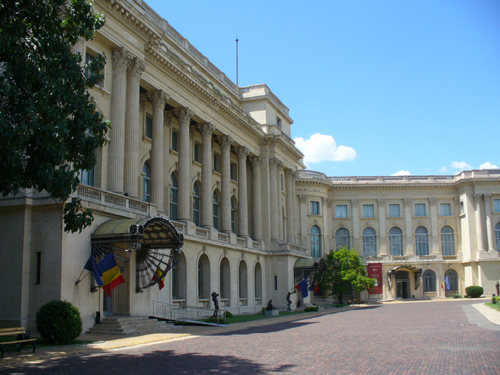 The Royal Palace in Bucharest is a 5 floor neoclassic building which was built between 1927 and 1937 and served as a royal residence only until 1948, when the monarchy was abolished under the Soviet pressure.
The Royal Palace was turned into the Romanian National Art Museum and it hosts two major galleries: the Romanian Art Gallery and the European Art Gallery. Besides work by Romanian artists, the former has many examples of iconostases and liturgical objects such as the epitaphios and the epitrachelion.
The Royal Palace in Bucharest is a 5 floor neoclassic building which was built between 1927 and 1937 and served as a royal residence only until 1948, when the monarchy was abolished under the Soviet pressure.
The Royal Palace was turned into the Romanian National Art Museum and it hosts two major galleries: the Romanian Art Gallery and the European Art Gallery. Besides work by Romanian artists, the former has many examples of iconostases and liturgical objects such as the epitaphios and the epitrachelion.
The European Art Gallery has works by Rubens, Van Gogh, the Rembrandt School, Boudin, Sisley, Pisarro, Rodin, Monet and others.
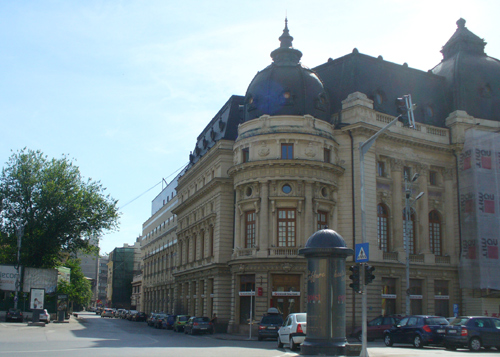 The library of the University of Bucharest.
The library of the University of Bucharest.
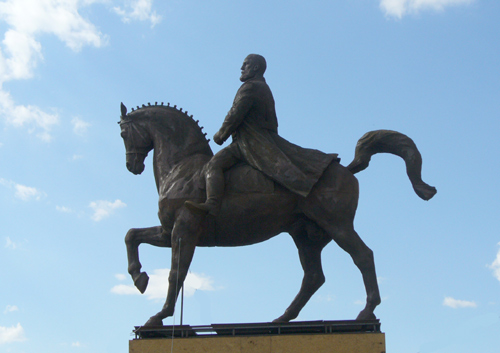 Prior to 1948, an equestrian statue of Carol I of Romania stood there. Created in 1930 by the Croatian and American sculptor Ivan Meštrovic, the statue was destroyed in 1948 by the Communists, who never paid damages to the sculptor. In 2005, the Romanian Minister of Culture decided to recreate the destroyed statue from a model that was kept by Meštrovic's family. In 2007, the Bucharest City Hall assigned the project to the sculptor Florin Codre, who designed an original statue of Carol inspired by Meštrovic's model.
Prior to 1948, an equestrian statue of Carol I of Romania stood there. Created in 1930 by the Croatian and American sculptor Ivan Meštrovic, the statue was destroyed in 1948 by the Communists, who never paid damages to the sculptor. In 2005, the Romanian Minister of Culture decided to recreate the destroyed statue from a model that was kept by Meštrovic's family. In 2007, the Bucharest City Hall assigned the project to the sculptor Florin Codre, who designed an original statue of Carol inspired by Meštrovic's model.
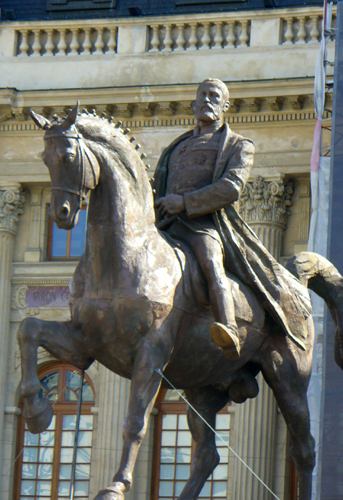 Another view of the statue.
Another view of the statue.
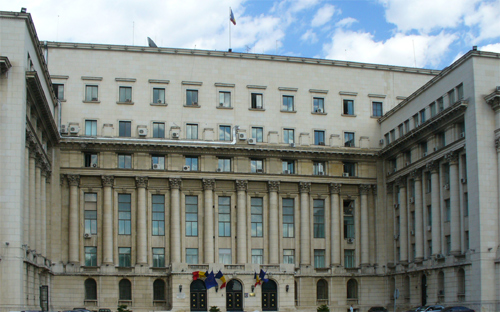 The square houses the building of the former Central Committee of the Romanian Communist Party (from where Nicolae Ceausescu and his wife fled by helicopter on December 22, 1989). In 1990, the building became the seat of the Senate and since 2006 it houses the Ministry of Interior and Administrative Reform.
The square houses the building of the former Central Committee of the Romanian Communist Party (from where Nicolae Ceausescu and his wife fled by helicopter on December 22, 1989). In 1990, the building became the seat of the Senate and since 2006 it houses the Ministry of Interior and Administrative Reform.
In August 1968 and December 1989, the square was the site of a two mass meetings which represented the apogee and the nadir of Ceausescu's regime. The 1968 moment marked the highest point in Ceausescu's popularity, when he openly condemned the invasion of Czechoslovakia and started pursuing a policy of independence from Kremlin. The 1989 meeting was meant to emulate the 1968 assembly and presented by the official media as a "spontaneous movement of support for Ceausescu", but it erupted as a revolt which led to the end of the regime.
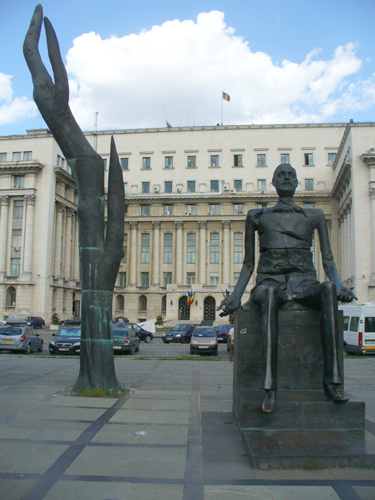 A statue of Iuliu Maniu as a broken man with an unbreakable spirit. Iuliu Maniu was a politician who served as Romania's prime minister on three occasions between 1928 and 1933. He became a prominent opponent of Soviet influence in Romania after the end of the Second World War and was sentenced to life imprisonment with hard labor by the Communist regime in 1947. He died in prison six years later and was buried without ceremony in a common grave in the prison courtyard.
A statue of Iuliu Maniu as a broken man with an unbreakable spirit. Iuliu Maniu was a politician who served as Romania's prime minister on three occasions between 1928 and 1933. He became a prominent opponent of Soviet influence in Romania after the end of the Second World War and was sentenced to life imprisonment with hard labor by the Communist regime in 1947. He died in prison six years later and was buried without ceremony in a common grave in the prison courtyard.
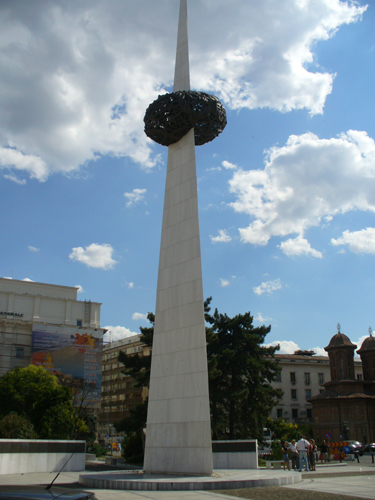 The Memorial of Rebirth is a memorial in Bucharest that commemorates the struggles and victims of the Romanian Revolution of 1989, which overthrew Communism. The memorial complex was inaugurated in August 2005 in Revolution Square, where Romania's Communist-era dictator, Nicolae Ceausescu, was publicly overthrown in December 1989.
The memorial, designed by Alexandru Ghildus, features as its centerpiece a 25-meter-high marble pillar reaching up to the sky, upon which a metal "crown" is placed. The pillar is surrounded by a 600 square meter plaza covered by marble and granite. There is also a wall listing the names of those killed in the revolution.
The Memorial of Rebirth is a memorial in Bucharest that commemorates the struggles and victims of the Romanian Revolution of 1989, which overthrew Communism. The memorial complex was inaugurated in August 2005 in Revolution Square, where Romania's Communist-era dictator, Nicolae Ceausescu, was publicly overthrown in December 1989.
The memorial, designed by Alexandru Ghildus, features as its centerpiece a 25-meter-high marble pillar reaching up to the sky, upon which a metal "crown" is placed. The pillar is surrounded by a 600 square meter plaza covered by marble and granite. There is also a wall listing the names of those killed in the revolution.
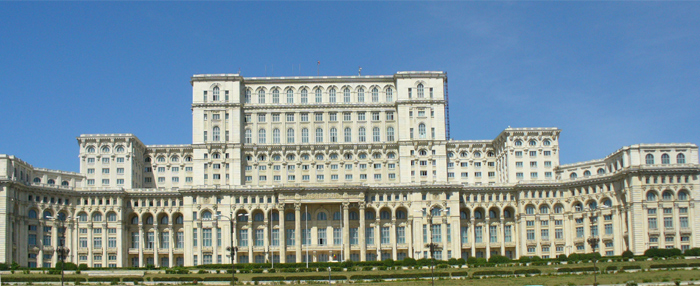
Built by Communist Party leader, Nicolae Ceausescu, the colossal Palace of Parliament is the second largest building in the world after the Pentagon. It is an immense structure that took 20,000 workers and 700 architects to build, and cost billions. It has 12 storys, 1,100 rooms, a 328 ft-long lobby, and four underground levels including an enormous nuclear bunker. Started in 1984, the dictator intended it to be the headquarters of his Communist Government, but it was still unfinished when he was executed in 1989. Today it houses the seat of Romania’s Parliament and is an international conference centre. Widely viewed as a personification of his obsession with grandiose things and actions, the construction entailed the demolition of a quarter of Bucharest’s historic centre, including 26 churches, and the relocation of 40,000 inhabitants from their 19th-century homes to new developments on the outskirts. Built and furnished exclusively from Romanian materials, the building reflects the work of the country’s best artisans.
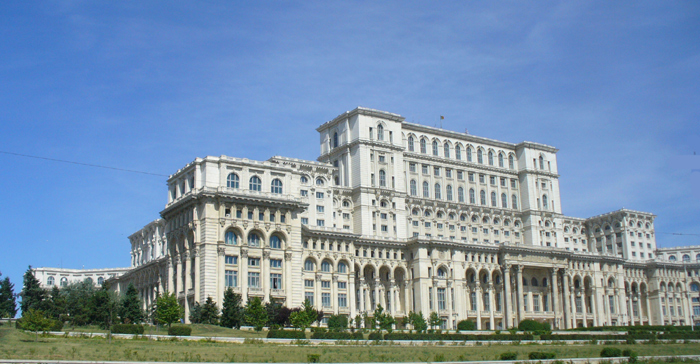 Another view.
Another view.
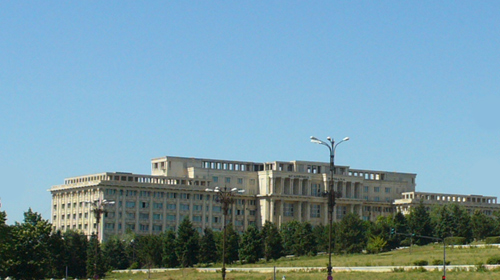 The science building built for Elena Ceausescu. Shortly after Nicolae Ceausescu became the Romanian supreme leader, Elena became the head of the ICECHIM (Institutul de Cercetari Chimice) after quickly having obtained a Ph.D. in chemistry even though she had had very little previous education in chemistry. Along with other political offices she became chairwoman of the Section for Chemistry in Romania’s Supreme Council for Economic and Soviet Development and President of the National Council for Science and Technology, created especially for her.
The science building built for Elena Ceausescu. Shortly after Nicolae Ceausescu became the Romanian supreme leader, Elena became the head of the ICECHIM (Institutul de Cercetari Chimice) after quickly having obtained a Ph.D. in chemistry even though she had had very little previous education in chemistry. Along with other political offices she became chairwoman of the Section for Chemistry in Romania’s Supreme Council for Economic and Soviet Development and President of the National Council for Science and Technology, created especially for her.
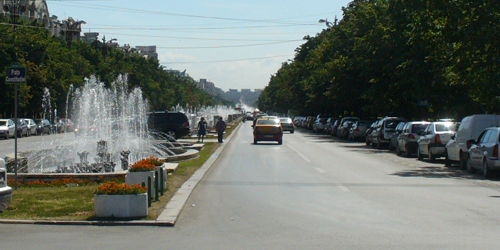 The street leading to the palace, built to rival the Champs Elysee in Paris. It has 42 fountains, one for each of the counties of Romania.
The street leading to the palace, built to rival the Champs Elysee in Paris. It has 42 fountains, one for each of the counties of Romania.
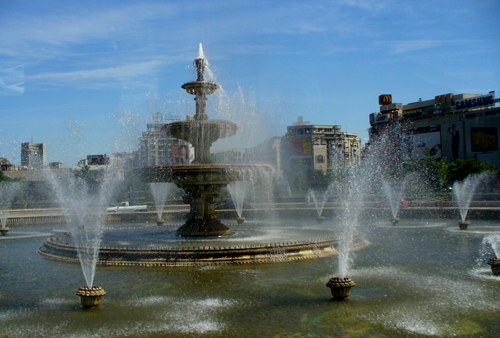 The fountain at the end represents the country of Romania.
The fountain at the end represents the country of Romania.
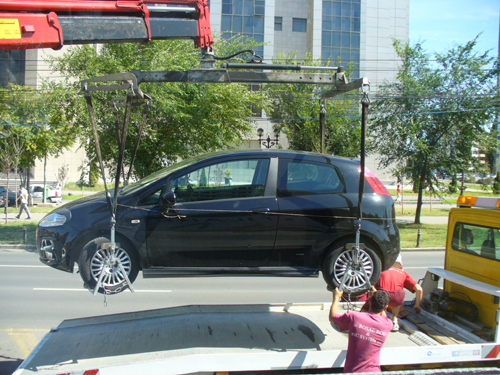 Because Bucharest has about 2.2 million people and 1.8 million cars plus the day visitors, this is a common occurrence.
Because Bucharest has about 2.2 million people and 1.8 million cars plus the day visitors, this is a common occurrence.
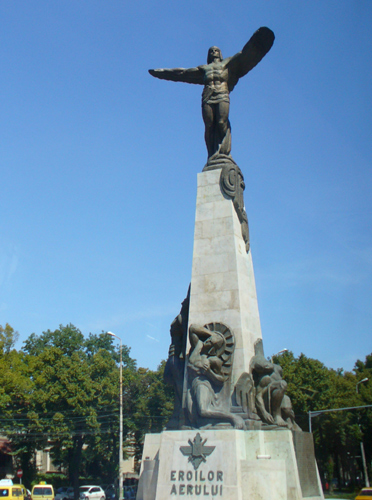 The Romanian Airmen Heroes Memorial with a statue of Icharus at the top.
The Romanian Airmen Heroes Memorial with a statue of Icharus at the top.
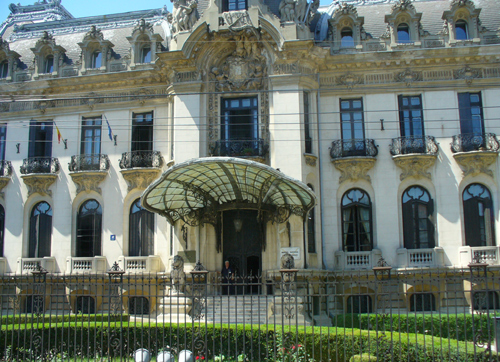 The home of the Romanian musician, George Enescu (1881-1955). He was a great violinist and composer, a distinguished conductor, an accomplished pianist, able cellist and a famous violin teacher who numbered Christian Ferras, Arthur Grumiaux and Yehudi Menuhin among his pupils.
The home of the Romanian musician, George Enescu (1881-1955). He was a great violinist and composer, a distinguished conductor, an accomplished pianist, able cellist and a famous violin teacher who numbered Christian Ferras, Arthur Grumiaux and Yehudi Menuhin among his pupils.
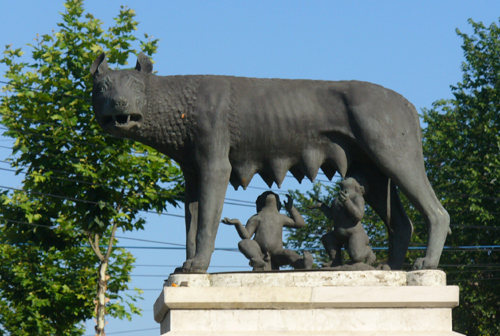 A statue of Romulus and Remus, commemorating the Roman history of Bucharest.
A statue of Romulus and Remus, commemorating the Roman history of Bucharest.
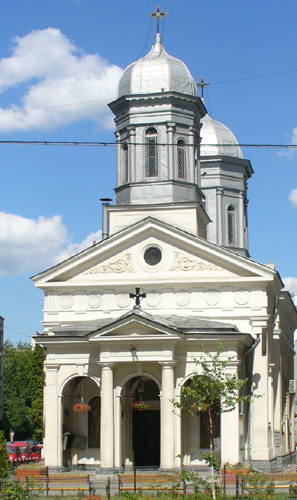
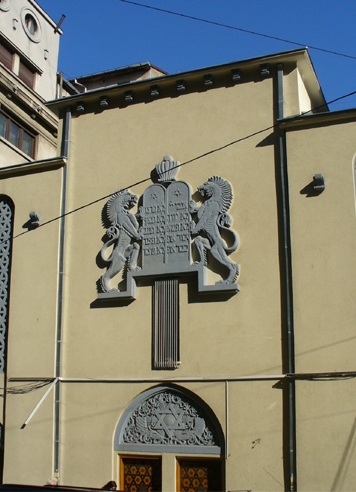
The White Church and a synagogue.
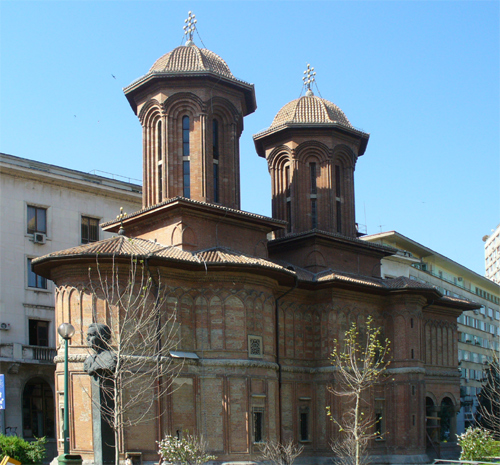 The Kretzulescu Church, originally built in 1722 and last restored in 1933-1939, using as much of the original material as possible.
The Kretzulescu Church, originally built in 1722 and last restored in 1933-1939, using as much of the original material as possible.
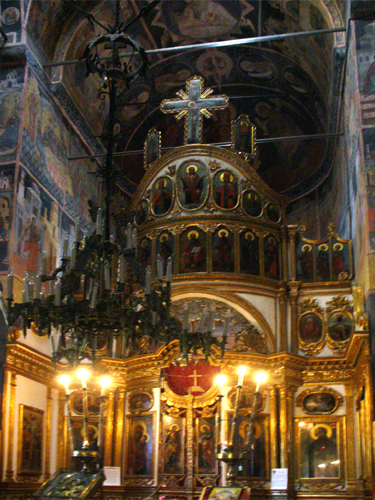 The interior with iconostasis at the front. An iconostasis is a screen or wall with icons which separates the sanctuary from the nave in Eastern Orthodox churches. More information on the use of icons in the Eastern Orthodox church may be found in this Wikipedia article.
The interior with iconostasis at the front. An iconostasis is a screen or wall with icons which separates the sanctuary from the nave in Eastern Orthodox churches. More information on the use of icons in the Eastern Orthodox church may be found in this Wikipedia article.
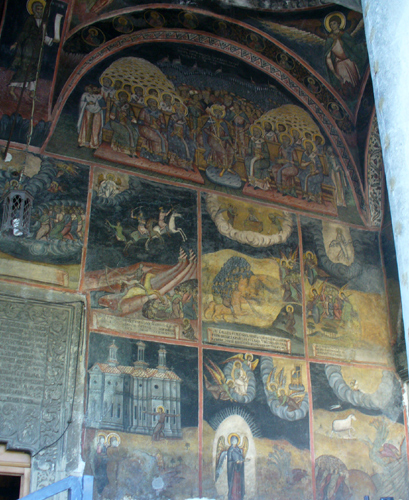 The fresco on the porch represents scenes from the Apocalypse, unusual for neo-Byzantine iconography.
The fresco on the porch represents scenes from the Apocalypse, unusual for neo-Byzantine iconography.
After a day and a half in Bucharest we rode a bus to Constanta where we boarded our ship.
